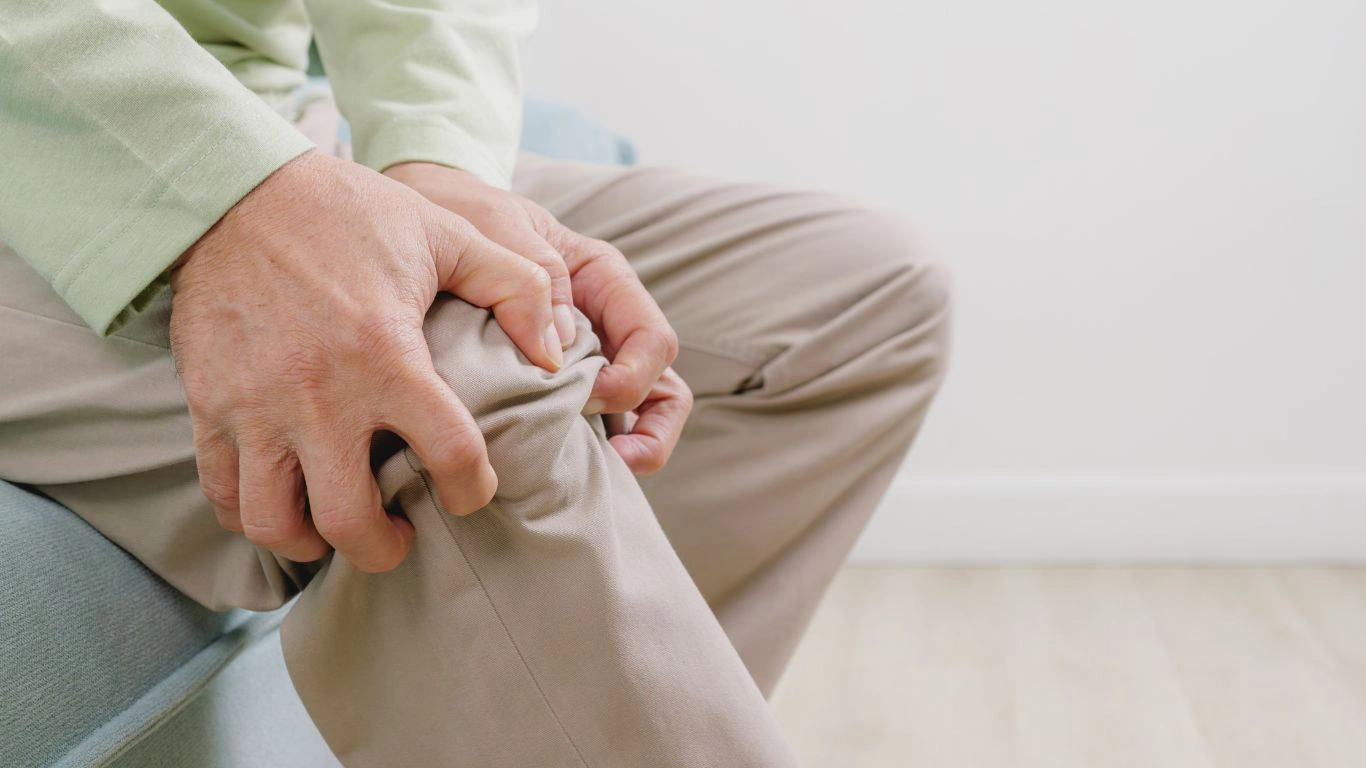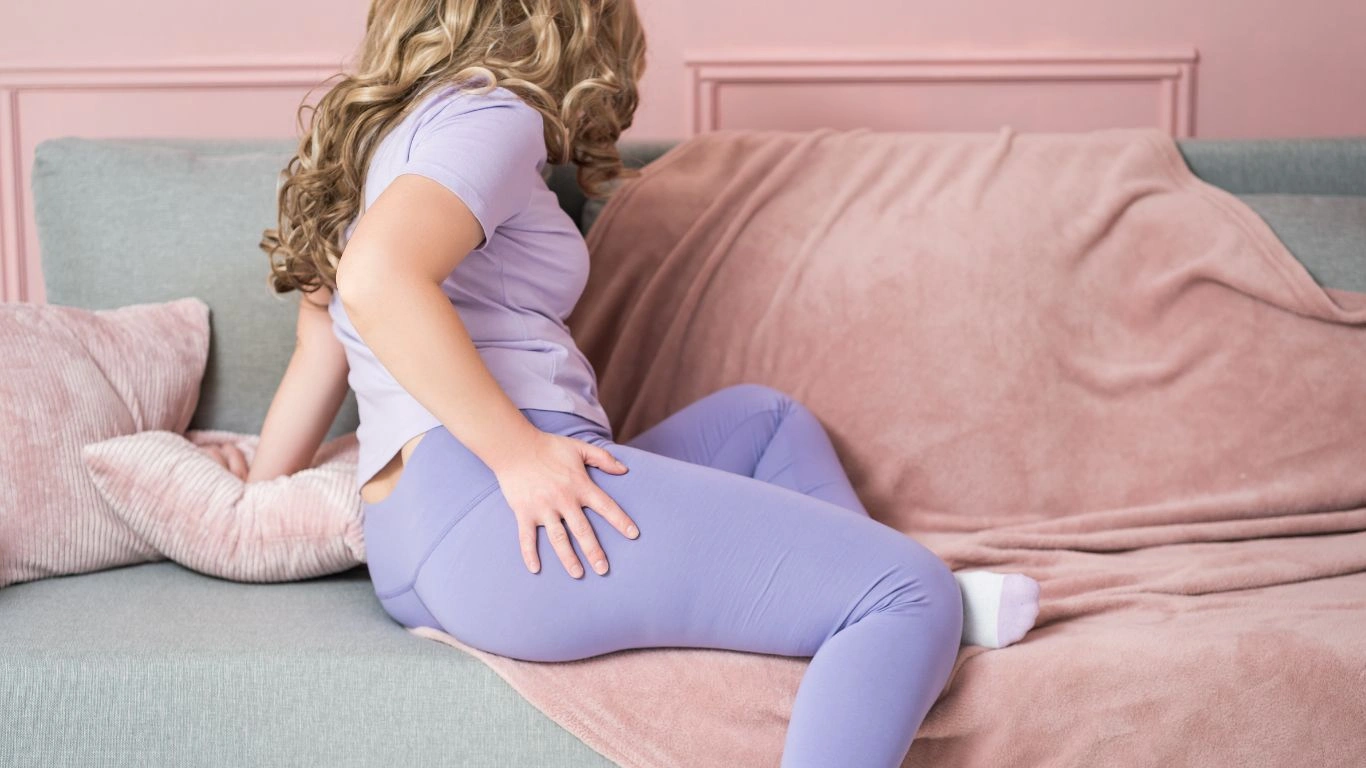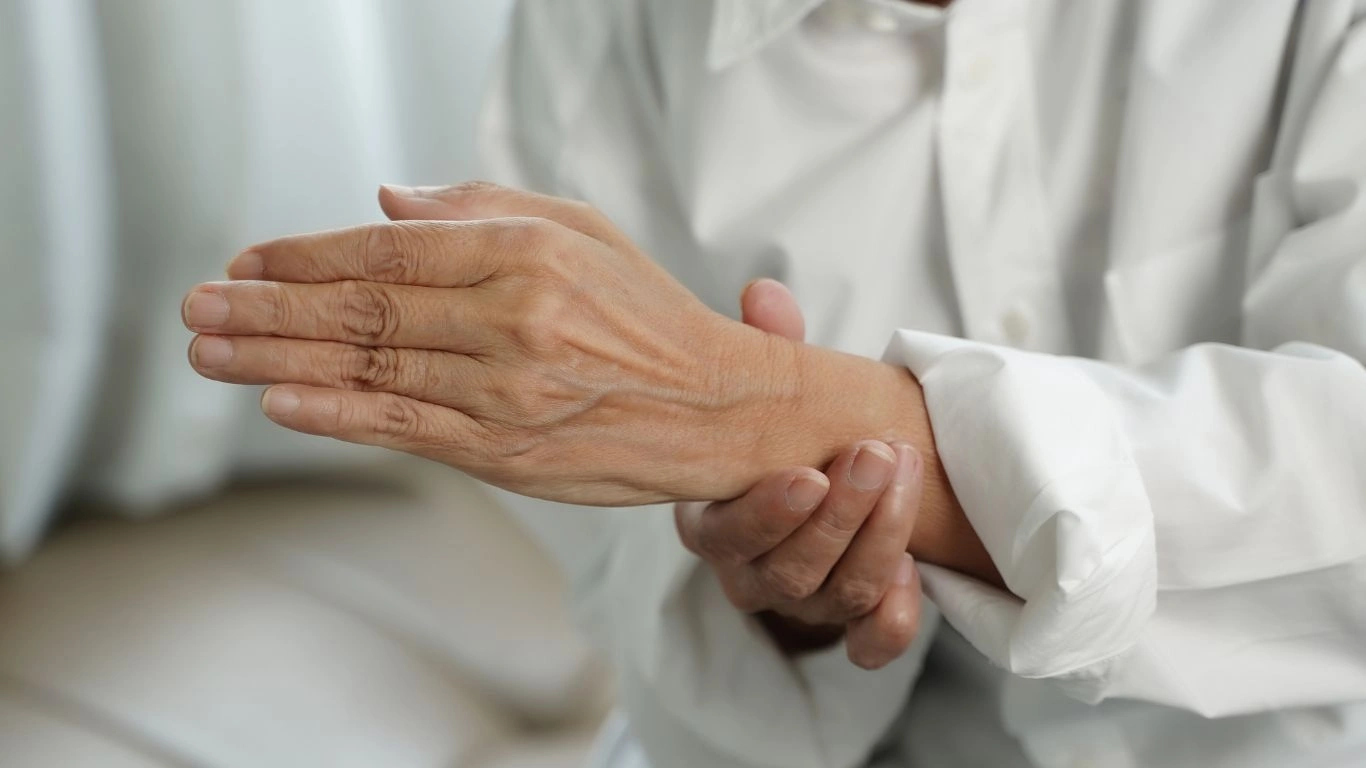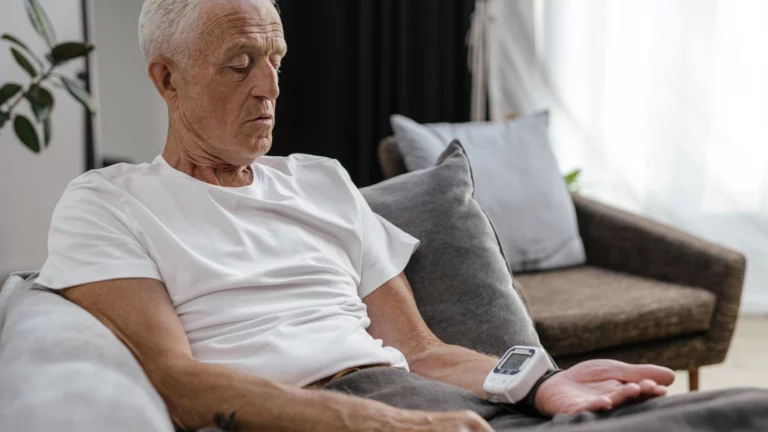The Incredible Benefits of Cold Therapy for Rheumatoid Arthritis Pain Relief
As a Rheumatology Nurse Practitioner, I’ve seen firsthand the struggles that come with rheumatoid arthritis (RA). It’s a chronic condition that can impact every aspect of a person’s life, from physical abilities to emotional well-being. One thing I’ve learned over the years is that managing RA goes beyond medication. Many patients, including some of my own, find relief through a variety of non-pharmacological treatments, one of which is cold therapy. In this article, we’ll dive into the benefits of cold therapy for rheumatoid arthritis, a treatment that’s often overlooked but can provide significant relief.
The Science Behind Cold Therapy for Rheumatoid Arthritis

Cold therapy, also known as cryotherapy, is often used in treating various musculoskeletal conditions, including rheumatoid arthritis. But how does it work? Essentially, cold therapy works by numbing the affected area, reducing swelling, and providing temporary pain relief. When applied to the skin, cold constricts blood vessels and decreases circulation in the area, which can significantly help reduce inflammation and control pain levels.
With RA, the immune system mistakenly attacks the joints, leading to inflammation, pain, and swelling. While cold therapy can’t reverse this immune system dysfunction, it can provide immediate relief by targeting the symptoms that make daily life difficult for those with RA. I’ve witnessed patients feel a sense of relief almost immediately after applying a cold compress or ice pack to inflamed areas. It’s not a permanent solution, but it can provide a much-needed break from the constant pain.
Why Cold Therapy Works for Inflammation
One of the main reasons cold therapy is effective for rheumatoid arthritis is its ability to target inflammation. The inflammation caused by RA is often what leads to discomfort and joint stiffness. By reducing the temperature of the area, cold therapy helps to slow down the blood flow, which in turn reduces swelling. Less swelling means less pressure on the joints, and ultimately, less pain.
Think about it: when you bump your elbow or twist your ankle, you immediately reach for an ice pack to manage the swelling, right? Well, this principle is no different for those with RA. I’ve seen many patients use ice packs on swollen wrists, knees, and fingers with noticeable success. The cold helps calm the overactive immune response, which is at the heart of RA symptoms. The result is a decrease in inflammation and a temporary reduction in pain.
How to Effectively Use Cold Therapy for RA

There are various methods of applying cold therapy, and I’ve seen patients find success using both simple and more advanced techniques. It’s all about what works best for the individual. Some of the most common forms of cold therapy include:
- Ice Packs: The classic approach! Simply wrap some ice in a towel or use a store-bought ice pack. Apply it directly to the affected joint for 15 to 20 minutes. Make sure not to apply ice directly to the skin to avoid frostbite.
- Cold Gel Packs: These are reusable and can be kept in the freezer for easy access. They mold to the shape of the joint, making them a great option for areas like the knees or shoulders.
- Cold Compresses: For a more gradual and sustained cold treatment, cold compresses can be soaked in cold water and applied to the joints. This is a good option for those who prefer less intense cold therapy.
- Cryo-Pneumatic Devices: These high-tech devices combine cold therapy with compression, offering a more targeted approach for RA pain. While more expensive, they can be effective for those with persistent swelling and pain.
When using cold therapy, it’s important to remember the 15-20 minute rule. You don’t want to overdo it. Applying cold for too long can cause damage to the skin and tissues, so always keep it to short intervals. I also recommend taking breaks between sessions to let the skin return to its normal temperature.
Cold Therapy as Part of an Overall Pain Management Plan
For many individuals with RA, cold therapy isn’t a standalone solution, but rather one part of a larger pain management strategy. I often encourage patients to combine cold therapy with other treatments like physical therapy, prescribed medications, and sometimes heat therapy. Cold and heat therapy, when used in conjunction, can provide a more comprehensive approach to managing RA symptoms.
For example, heat therapy works to relax muscles and increase blood flow, while cold therapy reduces inflammation and numbs pain. The key is to alternate these therapies depending on the type of symptom you’re dealing with. Cold is typically best for flare-ups, where inflammation is the primary issue, while heat can help with muscle stiffness and chronic pain.
The Psychological Benefits of Cold Therapy for RA

There’s another layer to cold therapy that’s often overlooked: the psychological relief it can provide. When you’re in pain day after day, it can take a toll on your mental health. Chronic pain is draining, and it can lead to feelings of hopelessness and frustration. Cold therapy offers more than just physical relief—it can help restore a sense of control over your body. This small, self-administered treatment can provide a temporary escape from the constant discomfort of RA, leading to improvements in mood and well-being.
As a nurse practitioner, I often remind my patients that managing rheumatoid arthritis is about more than just physical health. It’s about finding ways to maintain a positive outlook and continue doing the things you love. Cold therapy can offer that psychological boost, giving people a break from the pain, even if just for a while. It’s a simple yet effective tool in the overall toolbox for RA management.
In conclusion, while cold therapy isn’t a cure for rheumatoid arthritis, it’s a powerful tool for managing the symptoms. Whether used as part of a comprehensive pain management plan or as a standalone treatment, it offers a variety of benefits that can improve the quality of life for individuals living with RA. And, from my experience, it’s often one of the easiest and most accessible methods for providing relief.
Integrating Cold Therapy into Daily Life with RA

As we discussed in the first part of this article, cold therapy offers numerous benefits when it comes to alleviating the discomfort of rheumatoid arthritis. But how can you integrate it into your everyday routine in a way that’s both effective and sustainable? From my experience as a nurse practitioner, I’ve seen patients have the most success when they incorporate cold therapy into their daily habits, even outside of flare-ups.
One thing I always encourage patients to do is to set aside specific times throughout the day to apply cold therapy, even if they don’t feel intense pain at the moment. This preemptive approach can help keep inflammation from escalating. It’s similar to taking medication proactively—treating RA symptoms early can often prevent them from getting worse. For example, some of my patients have found relief by applying cold packs to their knees after a long day of standing or walking. This routine helps reduce swelling before it becomes an issue.
Of course, life gets busy, and not everyone has time to sit with an ice pack on their joints multiple times a day. But cold therapy doesn’t always have to take a lot of time. If you’re on the go or working, there are convenient options available, such as cold gel packs or wraps that fit comfortably around the wrists, knees, or elbows. These products allow you to continue with your daily activities while still getting the benefit of cold therapy.
Using Cold Therapy During RA Flares
There’s no doubt about it—RA flare-ups are tough. When your joints become swollen and painful, it can feel overwhelming. But cold therapy, during these flare periods, is incredibly useful. In fact, it’s often the go-to treatment I recommend when a patient’s RA is particularly inflamed.
For those who experience RA flare-ups with regularity, cold therapy can become a reliable part of your pain management toolkit. When I speak with my patients about flare management, I always emphasize the importance of listening to your body. If you notice that a joint is getting warm, swollen, or tender, that’s your cue to use cold therapy. Applying an ice pack or cold compress for just 15 to 20 minutes can often provide instant relief, helping to manage symptoms before they escalate into a full-blown flare. Personally, I’ve seen patients use cold therapy at the first signs of swelling and pain, and it’s made a significant difference in the severity of their flare-ups.
Another thing I’ve seen work well during flares is alternating cold therapy with rest. When your joints are inflamed, it’s essential to give them a break. Rest, combined with cold therapy, creates a powerful way to minimize further stress on the joints and allow your body to heal. I’ve had several patients share how resting and using cold therapy together have helped reduce the intensity and duration of their flare-ups.
Alternative Cold Therapy Methods for RA Pain Relief

Cold therapy doesn’t have to be limited to just traditional ice packs or compresses. Over the years, I’ve come across several alternative cold therapy methods that my patients have found helpful, some of which offer unique benefits for those with rheumatoid arthritis.
- Cold Water Immersion: Some patients find relief by soaking their hands, feet, or even their whole body in a tub of cold water. This method is especially helpful for those with RA in multiple joints, as it allows for full-body cooling and can reduce inflammation in areas that might not be as accessible with an ice pack. Just be cautious with the temperature—water that’s too cold can cause discomfort or damage the skin.
- Frozen Vegetable Packs: This one might sound a bit unconventional, but I’ve had a few patients swear by using frozen bags of peas or corn as a makeshift ice pack. These flexible, frozen vegetables can mold around the joint, providing relief in a pinch. Plus, they’re usually readily available and inexpensive.
- Cold Massage Tools: There are specialized cold massage tools on the market that combine massage therapy with cold treatment. These devices allow you to apply cold therapy to targeted areas while also providing gentle massage to help relieve stiffness and muscle tension. I’ve had patients rave about how these tools have helped them manage both pain and inflammation in one go.
Of course, not every method works for everyone. It’s important to experiment with different forms of cold therapy to find what works best for you. In my practice, I often encourage patients to try a few methods and then stick with the ones that provide the most relief. It’s all about finding the right fit for your needs and lifestyle.
Cold Therapy and Long-Term Rheumatoid Arthritis Management

While cold therapy is fantastic for managing short-term pain and inflammation, its role in long-term RA management is also significant. Over the years, I’ve seen many patients make cold therapy a regular part of their routine, helping them stay on top of their symptoms. When combined with other treatments like medication, physical therapy, and lifestyle adjustments, cold therapy can be a key part of a comprehensive RA management plan.
For instance, many of my patients use cold therapy in conjunction with physical therapy exercises to help maintain joint mobility. After completing a set of exercises, they’ll apply cold therapy to the affected joints to reduce any swelling that may result from the activity. This combination of strengthening and inflammation control can significantly improve the quality of life and joint function over time. It also helps prevent the kind of joint damage that can occur when RA goes unmanaged.
Cold therapy can also be a way to provide relief during periods of disease remission. Just because you aren’t experiencing an active flare doesn’t mean you won’t experience some discomfort or stiffness. Incorporating cold therapy into your routine during these periods can keep things under control and prevent those minor aches from turning into more serious issues down the line.
Ultimately, the goal of managing rheumatoid arthritis is not just to survive but to thrive. With a combination of effective treatments, including cold therapy, you can significantly improve your ability to function on a daily basis, while minimizing pain and inflammation. By understanding and utilizing cold therapy, RA patients can regain some control over their symptoms and enjoy a better quality of life.
When to Avoid Cold Therapy for RA

While cold therapy can be a powerful tool in managing rheumatoid arthritis, it’s important to understand that it’s not for everyone in every situation. There are certain times when cold therapy may not be appropriate, or when it could potentially cause harm. Over the years, I’ve learned that knowing when to hold off on cold therapy is just as crucial as knowing when to use it.
One situation where cold therapy should be avoided is if you have any issues with circulation. RA itself can affect circulation, especially in the smaller blood vessels. If you already have problems with blood flow, applying cold therapy could cause your blood vessels to constrict too much, potentially leading to further complications like numbness or even tissue damage. I always advise patients with poor circulation or certain vascular conditions to consult with their healthcare provider before incorporating cold therapy into their routine.
Another consideration is whether you have open wounds or skin conditions in the area you plan to treat. Applying cold therapy directly to broken or irritated skin can slow healing, worsen existing conditions, or cause frostbite in extreme cases. For those dealing with skin sensitivities, it’s crucial to use a barrier (like a towel) between the cold source and the skin, or to avoid cold therapy entirely until the skin condition has healed.
Lastly, while cold therapy is great for managing inflammation and pain, it should not be used as a substitute for professional medical treatment when necessary. If you are experiencing severe joint pain, or if you have any concerns about your RA symptoms worsening, it’s always best to reach out to a healthcare provider. Cold therapy can be an adjunct to other treatments, but it should never replace disease-modifying medications or physical therapy that are essential for long-term management of RA.
Maximizing the Benefits of Cold Therapy in RA Care

In my experience, those who integrate cold therapy into their RA care routine successfully are often the ones who approach it with a holistic mindset. While cold therapy is undoubtedly beneficial, the best results are achieved when it’s part of a broader management strategy. There are several ways to maximize the benefits of cold therapy when living with rheumatoid arthritis.
Combining Cold Therapy with Exercise
Exercise is crucial for managing rheumatoid arthritis, as it helps maintain joint mobility, improve muscle strength, and reduce overall stiffness. But I know from firsthand experience that after a workout or physical therapy session, joints can become sore and inflamed. This is where cold therapy can be especially helpful. I often recommend my patients use cold packs on joints after physical activity to reduce any inflammation and prevent flare-ups. Combining cold therapy with consistent exercise is one of the best ways to improve joint function in the long run.
One patient I worked with, who struggled with severe knee pain from RA, began using cold therapy after her physical therapy sessions. She found that it helped her recover faster and decreased the swelling that would typically follow exercise. Over time, she was able to build up strength in her knees and reduce the frequency of flare-ups, all while using cold therapy as part of her routine.
Pairing Cold Therapy with Proper Diet and Nutrition
Cold therapy isn’t just about alleviating physical pain—it’s also about supporting the body’s overall healing process. When paired with an anti-inflammatory diet, it can create a more robust and effective pain management strategy. Certain foods, like omega-3 fatty acids (found in fish like salmon), turmeric, and ginger, are known for their anti-inflammatory properties. I often recommend that patients combine dietary changes with cold therapy to further help reduce inflammation in the body.
While cold therapy provides temporary relief, a healthy diet can help manage inflammation over the long term. It’s about combining immediate symptom relief with foundational lifestyle changes that address the root cause of RA symptoms. As a nurse practitioner, I frequently see patients make significant improvements by simply tweaking their eating habits while using cold therapy as part of their routine care.
Real-Life Impact: Cold Therapy and Quality of Life
Incorporating cold therapy into an RA treatment plan can significantly improve the overall quality of life for many patients. It’s amazing how something as simple as applying ice to an inflamed joint can make such a profound difference. I’ve had numerous patients tell me that cold therapy has given them the ability to do things they hadn’t been able to do in years, such as enjoying family walks, gardening, or simply sleeping through the night without constant discomfort.
One particular patient comes to mind: she was in her early 60s and had been living with RA for nearly 20 years. Her pain had progressively gotten worse, and she was finding it difficult to even grip a pen. After introducing cold therapy into her daily routine, she started noticing improvements in her hand mobility and overall pain reduction. By using ice packs regularly and following other lifestyle changes, she was able to maintain a level of independence she hadn’t thought possible. Cold therapy didn’t cure her RA, but it certainly gave her more control over her symptoms.
Ultimately, this is what cold therapy—and a comprehensive approach to RA management—is all about: regaining control. RA is a challenging disease, but the more tools we have at our disposal, the better we can manage it and improve our daily lives. Cold therapy, when used properly, can be one of the most effective and accessible methods to provide relief from the chronic pain and inflammation that come with RA.
References
Disclaimer
The information provided in this article is for educational purposes only and is not intended as medical advice. Always consult with your healthcare provider before starting any new treatment regimen, including cold therapy, especially if you have underlying health conditions such as poor circulation or skin sensitivities. The management of rheumatoid arthritis should be personalized to each individual’s needs and symptoms.

Tarra Nugroho is a dedicated Nurse Practitioner with a strong foundation in family and preventive care. She brings both compassion and clinical expertise to her practice, focusing on patient-centered care and health education. As a contributor to Healthusias.com, Tarra translates medical knowledge into clear, empowering articles on topics like women’s health, chronic disease management, and lifestyle medicine. Her mission is simple: help people feel seen, heard, and informed—both in the clinic and through the content she creates. When she’s not caring for patients, Tarra enjoys weekend hikes, plant-based cooking, and curling up with a good health podcast.






